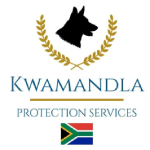Anti-poaching operations rely on precise methods to identify, document, and secure illegal wildlife products. Detection dogs play an important role, guiding teams to hidden rhino horn and ivory fragments that humans or technology might miss. In field operations, Rhino Horn vs. Ivory detection requires careful differentiation between materials. Trained dogs, combined with visual inspection and portable tools, enhance accuracy and reduce the risk of misidentification.
Sample Recovery and Scene Integrity
When contraband is found, teams first secure the area. Gloves and sterile tools prevent contamination of scent or DNA. Rhino horn fragments and ivory pieces are logged separately to avoid cross-scent transfer. Detection dogs often guide officers to hidden fragments or obscured items, ensuring all evidence is located before removal. Officers photograph items in place to maintain the chain of custody, while canine alerts confirm they have not overlooked any sample.
Material Differentiation in the Field
Horn and ivory can appear similar, particularly when carved. Field agents rely on texture, grain, and density differences—rhino horn is fibrous and lightweight, while ivory has visible Schreger lines and rigidity. Portable UV lamps and magnifying lenses aid verification. Detection dogs also confirm the presence of organic scent residues, helping officers reduce the risk of misidentification before sending samples to a laboratory.
Why Dogs Detect What Machines Cannot
Scent particles disperse unpredictably due to airflow, temperature, and handling. Machines require direct contact or line-of-sight, but dogs can trace minute, dispersed scents across surfaces, through containers, or around hidden compartments. Dogs are able to separate the target odour from background smells, even when they’re masked with paper, plastics, or other materials. This ability is critical in complex or cluttered environments where technology alone falls short.
Evidence Labelling and Documentation
Every recovered item receives a unique reference code with GPS coordinates, date, time, and officer initials. Officers seal evidence bags with tamper-proof tags and store them under controlled conditions. Digital logs capture each detection—including canine alerts—maintaining full traceability for analysis and court proceedings.
Laboratory Verification and Data Sharing
Forensic labs confirm identifications using microscopy, spectroscopy, and isotope testing. Results integrate dog-assisted detection data into regional databases, enabling cross-referencing with prior seizures. Combining field canine observations with lab verification strengthens investigations and identifies smuggling patterns.
Operational Coordination and Legal Compliance
Coordination between wildlife authorities, customs, and forensic experts ensures evidence is legally admissible. Standardized protocols make canine-assisted findings credible, highlighting the crucial role of dogs in Rhino Horn vs. Ivory detection. Their work helps locate hidden fragments, preserve evidence, and strengthen anti-poaching efforts.

